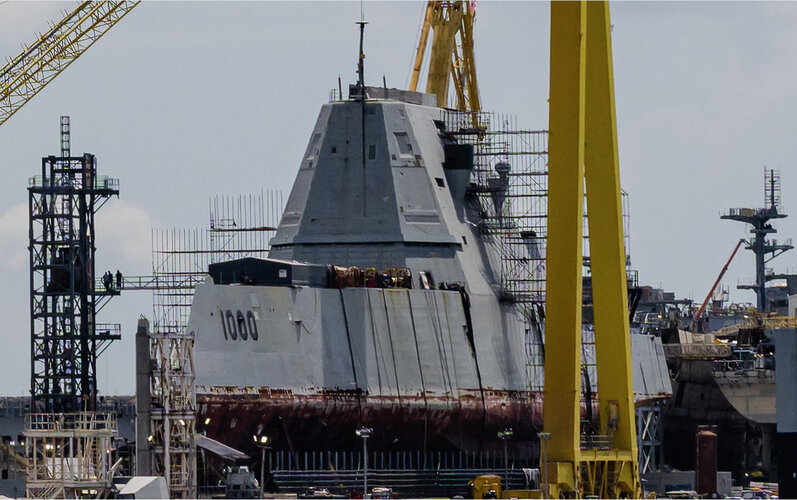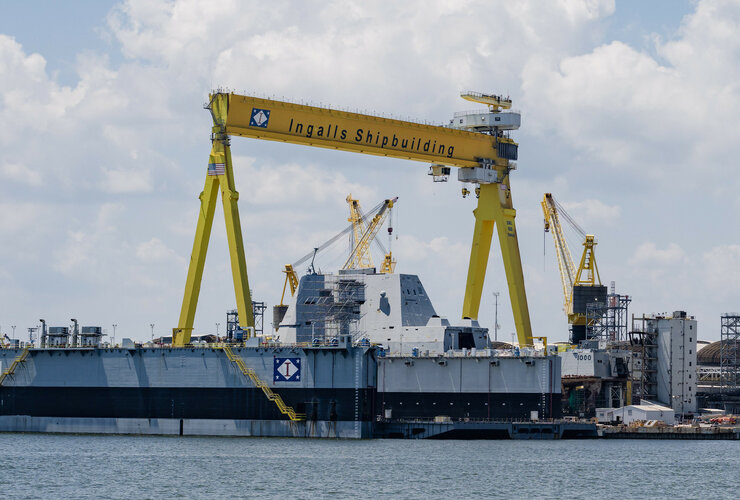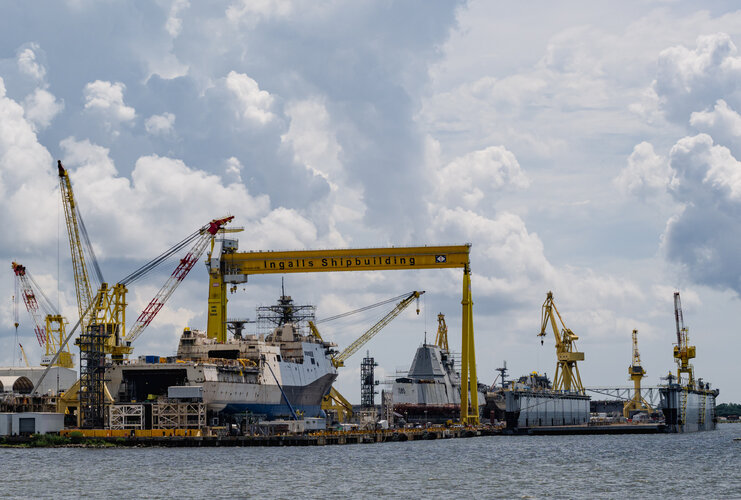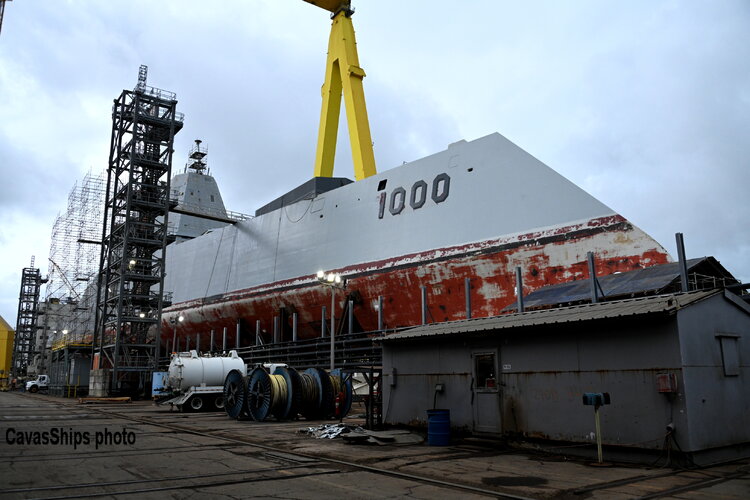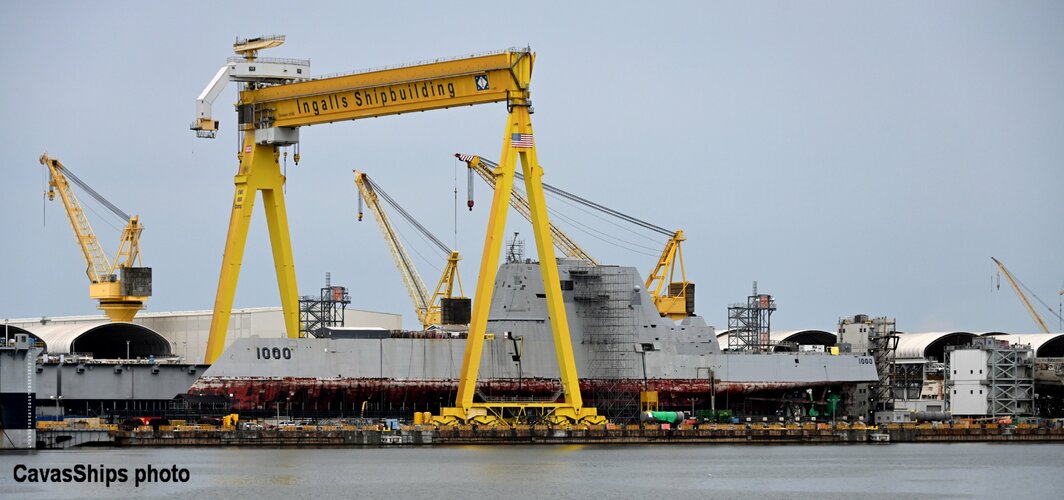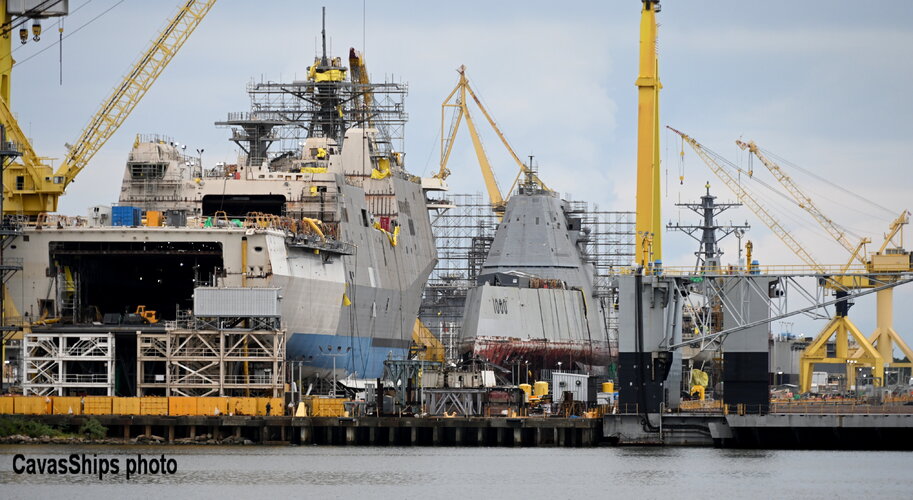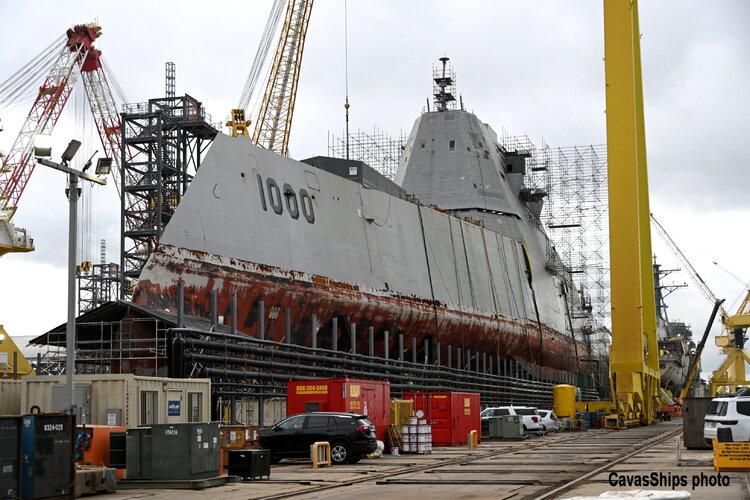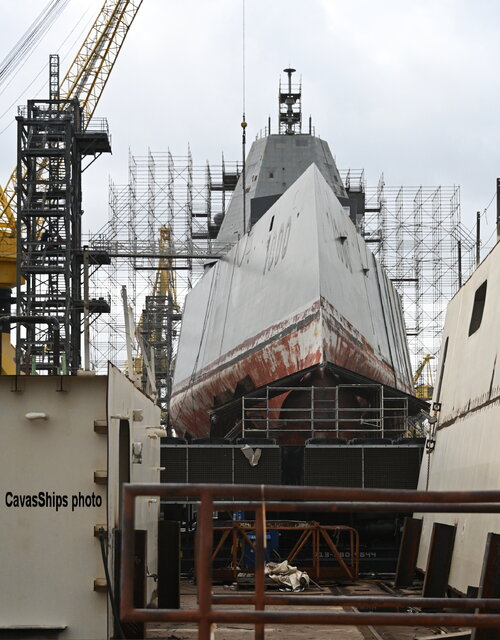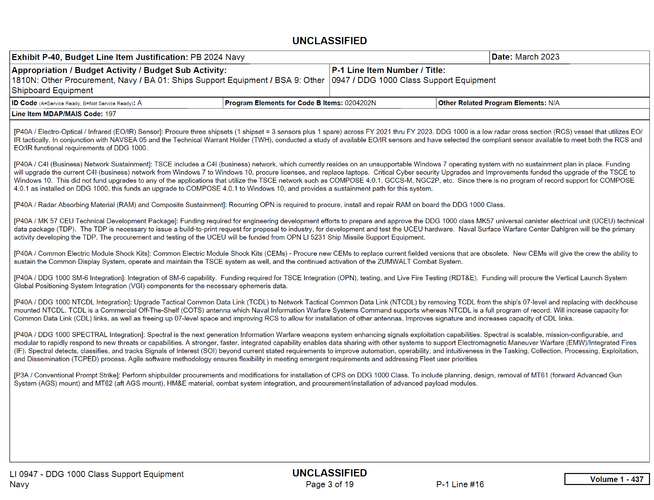It should be noted that Zumwalt also has a significant amount of IR signature reduction, it should certainly be much less vulnerable to being acquired by anti-ship missiles with combined radar and IR guidance than any other existing surface combatant.
It has an exhaust suppressor...
A hyperspectral, or even imaging infrared, doesn't really care about "infrared signature" in the conventional sense though. They can track things depending on the chemical compositions of their hull paints, or within a couple degrees of ambient, so any amount of "infrared signature reduction" is going to not really help you at all.
Taking a cue from the world of AFVs, Zumwalt could incorporate a multispectral infrared paint to try to match the background, or dissolve its contrasts, but this would probably only work against very old imaging infrared sensors and might increase a hyperspectral signature at the same time. I'm not even sure if those types of paints work against autonomous sensors and aren't just confusing for human gunners looking through periscopes, either. I'm sure they could work against contrast matching algorithms like the old Javelins but who knows what future sensors are doing.
There's no real easy way to defeat either threat besides a deep magazine and Zumwalt has 10 fewer cells than the Burke.
Zumwalt was intended as a Sprucan for the 21st Century,
...kind of? It was supposed to replace the Spruance 1:1 but its mission was gunfire support for landing operations and escort of ATFs. Which is what the Spruance turned into, only after the Soviet submarine threat had diminished, and they received the VLS for TLAM.
A "Spruance for the 21st century" in the real sense of Spruance, deep ocean escort of CVBGs, is the Constellation.
taking into account the vastly greater air and missile threat, signature reduction, and having a NGFS mission tacked on to ensure it survived the late 90s and early 2000s.
Which is probably when it should have been appearing in the fleet, honestly, but it was based on Navy observation of a 1970's designed bomber against 1950's designed air defense systems and going "WHOA COOL" mostly.
I certainly think it is far closer to the ideal future surface combatant than any other ship in existence, not withstanding the 100nm-ranged rocket-guns.
It was ideal in the 1970's. By the 2010's it's looking very much like an F-117, its inspiration, for somewhat obvious reasons.
It's an okay boat but it's not "ideal" for anything besides littoral actions and protection of amphibious task force shipping during their shore runs and delivery of assault troops to the beach. Nothing else needs to look like Zumwalt, because nothing else needs that level of radar reduction, and suggesting that Zumwalt needs that level to begin with is debatable given how it turned out.
Even then, it was rapidly outstripped by anti-ship missile systems. It would have been great to have a couple dozen in Desert Storm because then the Navy could have bombarded Iraqi positions without worrying about Silkworms like what happened with Missouri though.
The 100 mile requirement was a pipe dream. Even now it is proving to be unworkable - SLRC and ERCA fell by the wayside. I think Congress mandated that it should be a gun, but honestly they just should have adopted some kind of rocket. The specialized 155mm was such an obvious dead end.
It's only dumb because the U.S. can't make anything besides 105mm and 155mm these days.
If it could make 175mm or 203mm guns still it would be fine. It would need an entirely separate supply chain but a particularly high pressure smoothbore 175mm or 203mm (to avoid the banding issues at high pressures/barrel lengths that killed ERCA), firing an HVP derived shell, can probably hit 80 nmi without too much issue.
That said 155mm with a HVP alone did the threshold 67 nmi with an L/39 without issue if you listen to BAE.


